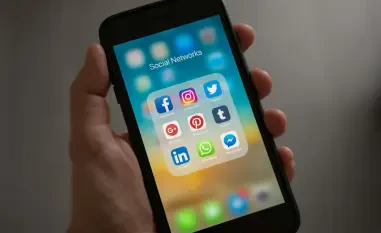Welcome to an insightful conversation with Malik Haidar, a renowned cybersecurity expert with a wealth of experience in safeguarding multinational corporations from sophisticated digital threats. With a deep background in analytics, intelligence, and security, Malik has a unique perspective on integrating business strategies with cutting-edge cybersecurity practices. In this interview, we dive into the recent Apple security updates addressing a critical zero-day vulnerability, exploring the nature of such flaws, their impact on users, and the broader implications for device security. Join us as we unpack the technical intricacies and real-world consequences of this targeted attack on Apple’s systems.
Can you walk us through what a zero-day vulnerability is and why it’s particularly concerning in the context of Apple’s recent security update?
Absolutely. A zero-day vulnerability is a flaw in software that’s unknown to the vendor or developer at the time it’s discovered or exploited by attackers. What makes it so dangerous is that there’s no patch or defense available when it’s first used in the wild—hence the term “zero-day,” meaning zero days to prepare. In Apple’s case, with the vulnerability tracked as CVE-2025-43300, it’s especially concerning because it was actively exploited in targeted attacks. This means attackers were already leveraging this flaw to compromise devices before Apple even knew about it, putting users at significant risk, particularly since Apple products are so widely used and trusted.
What role does the ImageIO framework play in Apple’s operating systems, and why is a flaw in this component so risky?
The ImageIO framework is a critical part of iOS, iPadOS, and macOS. It’s essentially the engine that handles the processing of image files—think JPEGs, PNGs, and other formats—across various apps and system functions. When you view a photo or load an image in a browser, ImageIO is often working behind the scenes to decode and render that content. A flaw like the out-of-bounds write bug in this framework is incredibly risky because images are everywhere; they’re a common vector for attacks. If a malicious image file can trigger memory corruption through this framework, it could allow attackers to execute arbitrary code, potentially taking control of the device. That’s a massive entry point for exploitation.
Apple mentioned that processing a malicious image file could lead to memory corruption. Can you explain what that means for the average user?
Sure, memory corruption happens when a program, like one using the ImageIO framework, writes or reads data outside the intended memory boundaries. Imagine it as scribbling outside the lines in a coloring book—it messes everything up. For a user, this could mean an app crashing at best, or at worst, it creates a backdoor for attackers to run malicious code. In real-world terms, something as simple as opening a booby-trapped image sent via email or a messaging app could compromise your device. It might install spyware, steal data, or even lock you out. The scariest part is that users often don’t realize anything’s wrong until it’s too late.
How does Apple’s fix with improved bounds checking address this vulnerability, and is this a common approach?
Bounds checking is a programming technique that ensures data stays within the allocated memory space—think of it as putting up guardrails to prevent that scribbling I mentioned earlier. By improving bounds checking, Apple is making sure the ImageIO framework doesn’t allow data from a malicious image to overflow into areas of memory it shouldn’t access, which stops the corruption that leads to exploitation. This is a pretty standard fix for out-of-bounds write bugs because it directly tackles the root cause. It’s like fixing a leaky pipe by sealing the hole rather than just mopping up the water—it’s effective and widely used in software security patches.
Apple noted that this vulnerability was exploited in highly targeted attacks described as extremely sophisticated. What does that tell us about the potential attackers?
When Apple describes attacks as highly targeted and sophisticated, it’s a strong hint that we’re not dealing with your average script kiddie or random hacker. These are likely well-funded, highly skilled groups—possibly state-sponsored actors or commercial spyware vendors—who have the resources to discover and weaponize zero-day flaws. The targeting aspect suggests they’re going after specific individuals, like high-profile figures, journalists, or executives, rather than casting a wide net. This level of precision often points to motives like espionage or surveillance, which aligns with the kind of operations spyware vendors or government-backed groups might conduct.
Since Apple discovered this vulnerability internally, how does that impact what the public might learn about the issue?
Internal discovery means Apple found the flaw through their own testing or monitoring, rather than it being reported by an external researcher or hacker. While that’s great for their proactive security stance, it often means less public information will be shared about the bug or how it was exploited. Apple tends to keep details close to the chest to avoid giving attackers more ammo for future exploits. So, we might not get a full picture of the attack methods or who was targeted anytime soon. It also can speed up the patching process since they’re not waiting on external validation, but the trade-off is less transparency for researchers and users trying to understand the threat landscape.
With patches released across multiple Apple operating systems, what’s the urgency for users to update, even if they don’t think they’re a target?
The urgency to update cannot be overstated, even if you don’t believe you’re a target. While Apple noted these were highly targeted attacks, once a vulnerability like this is public, other attackers can reverse-engineer the patch or exploit the flaw before everyone updates. It’s like leaving your front door unlocked in a neighborhood where a burglary just happened—maybe you’re not the next target, but why take the chance? Plus, image-based exploits are sneaky; you could be affected just by previewing a file. Updating to the latest versions of iOS, iPadOS, or macOS seals that door shut and protects against potential widespread attacks that might follow.
Looking ahead, what’s your forecast for the evolution of zero-day vulnerabilities and targeted attacks on widely used platforms like Apple’s?
I think we’re going to see zero-day vulnerabilities remain a critical battleground, especially on platforms like Apple’s that have massive user bases and high-value targets. Attackers are getting smarter, using advanced techniques like machine learning to find flaws faster than vendors can. At the same time, the market for zero-days—whether sold to spyware vendors or state actors—is growing, which fuels more sophisticated attacks. For Apple, their focus on privacy and security will keep pushing them to improve internal detection, but the cat-and-mouse game with attackers won’t stop. I expect more emphasis on real-time threat detection and even tighter integration of hardware and software security to stay ahead of these threats in the coming years.













